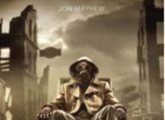These original and inspiring activities from Dr Joanna Rhodes could go a long way towards preparing your students for the new challenges of ks4 science from September 2014…
Why teach this?
Across the curriculum at Key Stage 4 students are increasingly required to apply their knowledge of key concepts to new and unfamiliar scenarios. This lesson is designed to help you to plan ahead for the new school year. Prepare now for the perfect opportunity to start with skills that will aid comprehension of examination questions and coursework activities and help your students to approach these in a coherent and organised way.
Exam questions, coursework and ISAs require our students to have skills of analysis and comprehension. They also need to demonstrate an understanding of how to think scientifically and plan experiments. With the inclusion of “Working Scientifically” in the new programme of study for science [Additional Resource 1] these concepts are staying with us. But when and how do you plan skills into the scheme of work? At my school this year we have decided to focus the first half term of Key Stage 4 completely on skills. This lesson plan shares some of the strategies we will be using.
I have divided “thinking scientifically” into i) the scientific method, designing and interpreting an experiment; and ii) thinking scientifically to apply your knowledge and understanding to answer examination questions including those that require an extended response with good quality of written communication. The skills developed are applicable to all three sciences and cross-curricular links are very strong, especially with the other core subjects: maths and English. The activities present an opportunity to look at science in the media to encourage students to form opinions including on climate change, pollution and managing our planet’s natural resources. Supporting courses are available for teachers including “Thinking Scientifically”, provided by the Science Learning Centres [AR 2].
Starter activity
Variable Vocabulary
There is research to show that children have a natural ability to think scientifically and even young children have been observed to isolate different variables for testing [AR3]. Nurture and extend this innate ability by teaching students to grasp the required terminology to describe or interpret their experiment. I have found it helpful to teach students a single form of words for a hypothesis that incorporates the variables into it. For example “If I change the independent variable I will measure a change in the dependent variable and to make it a fair test I will keep the control variables the same”.
Students can then be presented with a number of scenarios and asked to give a hypothesis and variables for each. For example ‘design an experiment to investigate a factor affecting the height a ball bounces’ becomes: “If I change the type of ball I will measure a change in the height that the ball bounces. To make it a fair test I will keep the height I drop the ball from the same each time.” Ask students to try to write the hypothesis and variables for the following (with increasing difficulty to aid differentiation):
1. An experiment to investigate the relationship between surface area and heat lost
2. An experiment to investigate the effect of concentration on the rate of a chemical reaction
3. An experiment to investigate the relationship between the resistance of a bulb and the current
4. An experiment to investigate a factor that affects the germination of cress seeds.
5. An experiment to investigate the relationship between the type of sugar and the rate of respiration of yeast.
Main activities
1. Getting practical
Use the hypotheses and variables from the starter activity for this twist on designing a practical experiment. Ask each group of students to provide a step-by-step written method for another group to use. The students designing the experiment should practise on the equipment and should ensure that there is enough detail in their method. They should consider whether a diagram is necessary and could carry out preliminary experiments. For example, if quantities are needed, what would be suitable to give good results? Once they have planned the experiment they should provide the hypothesis, variables, equipment list, risk assessment and step-by-step method to another group to attempt.
Ask each group to fill in a feedback sheet rating the experiment they have completed for clarity, ease of following instructions, quality of results and suitability of equipment. This adds a new perspective when they are writing their own methods in coursework, ISAs or examinations. It also means that a number of standard practicals can be experienced and shared in one classroom. To extend students further why not select the best instructions for a front of class demonstration with the writing team providing a commentary as the practical team carry out the experiment? You could even film these demos as instructional videos to help future students prepare for coursework and ISAs.
2. “But we haven’t been taught that?”
All teachers will be familiar with the frustration felt when a student comments, “but we haven’t been taught that”. Exam questions are increasingly using novel and unrecognisable scenarios for students to apply their knowledge. Examples I have encountered include: how to power an Antarctic research station; how to use geothermal energy from Iceland to power the UK; how to use technetium-99 to diagnose kidney failure; how to use graphene as a new surface for mobile phone screens; applications of self-healing polymers in space exploration; and the different proportions of isotopes found on a comet. Of course it would be impossible to predict the multitude of scenarios that science could present so as teachers we have to get better at preparing students to apply their knowledge.
For this activity you need as many scientific articles as you can find – they could be from New Scientist, Scientific American, the BBC science website, or the press. The more recent the better as this can spark the greatest interest from students. Working in small groups students should select an article and design a set of ten challenging questions about the article and a mark scheme of answers. Some of the questions should be comprehension questions; others should rely on students linking a concept from topics they have studied. Students could also use command words in their questions (see ‘summary’, below). Once complete, students can exchange questions and articles with another team, and then swap them back again for marking. When completed you also have a ready-made set of resources and mark schemes that need minimal editing to use with another class. Compilations of questions from a number of classes can be stored and used in the run up to exams to encourage students to think outside the box and look for concepts they are familiar with in even the most obscure exam questions or scenarios.
Summary
I command you!
Exam boards usually provide lists of the “command words” used in examination questions and what they mean [AR4] [AR5]. This can be crucial in an examination when missing information, particularly on an extended response question could restrict the level of the answer and therefore the marks, even if the answer itself is very detailed. An example is the word “evaluate” where pros, cons and a justified conclusion are required.
Get students moving and practising basic commands on each other. Use benches or desks to set up a maze in the classroom. A team of students have to guide one of their team blindfolded through the maze using only verbal commands. After this practice set up a grid on the classroom floor placing laminated coloured cards with command words on the top and a science question underneath and let the team negotiate their way across the classroom taking it in turns to answer the questions and moving forward or sideways. Are some command words easier than others? Good examples to work on include, evaluate, describe, explain, show that, suggest and compare.
Stretch them further
What’s trending?
Students need to be confident in drawing and interpreting tables, graphs, bar charts and pie charts. In this activity give each group a table of data. use large a3 graph paper and ask students to select the most appropriate way to present the data. try to ensure they have a mixture of categoric and continuous data, the odd anomalous point and data that needs a line of best fit as well as data that shows a trend over time. It is easy to differentiate this activity by providing more challenging data for groups with gifted and talented pupils. YOu could also give your most able students an incomplete table that requires them to spot anomalous data and leave it out of the calculation of the mean for each data point. In the second part of the activity pass the tables and data to another group whose task is to describe the pattern or trend shown by the data shown. introduce key terminology such as linear and non-linear correlation, and positive and negative correlation. more able students could comment on the gradient of a graph at the start, during the experiment or at the end and explain what this change in gradient represents. for example in an experiment showing the progress of a chemical reaction the gradient would show a high initial rate leveling off as the rate slows until the reaction stops completely.
Additional resources
[AR1] PROGRAMME OF STUDY FOR SCIENCE KS4, DEPARTMENT FOR EDUCATION tinyurl.com/tsthinkscience
[AR2] SCIENCE LEARNING CENTRE COURSES tinyurl.com/tsthinkscience3
[AR3] SCIENTIFIC AMERICAN tinyurl.com/tsthinkscience2
[AR4] OCR EXAM TECHNIQUE AND COMMAND WORDS tinyurl.com/tsthinkscience4
[AR5] AQA COMMAND WORDS
About our expert
Dr Joanna L. Rhodes M.Chem, D.Phil, MRSC is a teacher of science at Shelley College, Huddersfield.








